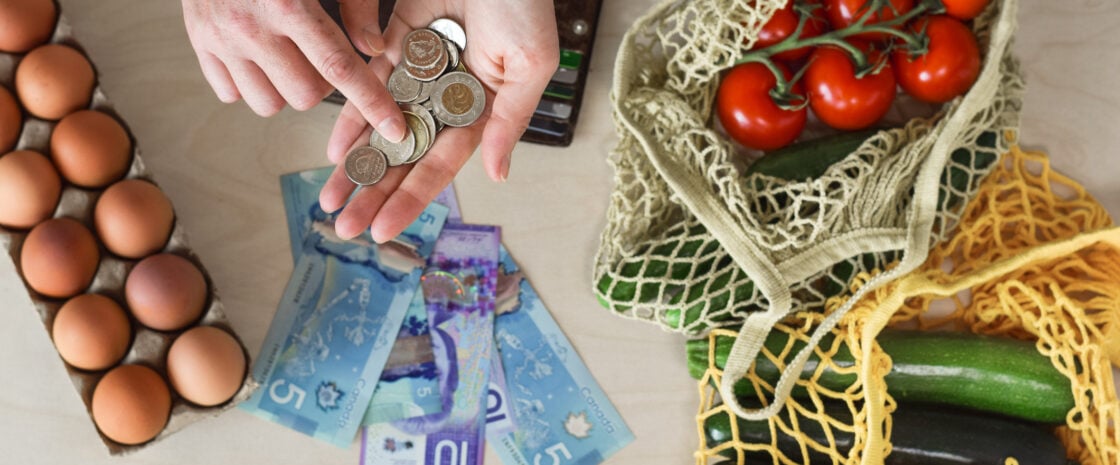Challenges urging consumers to curb spending are nothing new — for some people, this is a common New Year’s resolution.
But this year, the ‘no buy’ movement has taken off on social media, with many Canadians bullish on the idea of cutting back.
Learn more about why this year is different, and how to participate in a way that works for you.
What’s the ‘no buy 2025’ movement?
On TikTok, the 2025 ‘no buy’ movement is described as a challenge to curb overconsumption habits and achieve financial goals.
Participants often aim to stop buying non-essential items like clothing, cosmetics, splurging on takeout or home decor, although it varies from person to person.
Why make such a pledge? Reasons include saving more, paying off debt, and developing more mindful shopping habits.
While no buy isn’t new — the first ‘buy nothing’ day was held back in 1992 and bloggers have been documenting their no spending experiences for years — the latest challenge has been trending on social media over the last few months, racking up scores of views.
The trend comes on the heels of a one-day ‘economic blackout’ boycott that took place on Feb. 28 and targeted large American retailers in both the U.S. and Canada.
Why Canadians are interested
Trends like “underconsumption core” are gaining traction while rising political tensions are also causing many Canadians to reassess their spending habits and prioritize mindful spending, Parween Mander, money coach and founder of The Wealthy Wolfe in Vancouver, said in an email.
“People on social media [are] normalizing re-wearing the same clothes, embracing non-aesthetic homes, and resisting the pressure to constantly upgrade their belongings,” she said. “Additionally, the tariff war and rising costs of basic necessities in Canada are pushing many to tighten their budgets. This shift isn’t just about spending less — it’s also about saving more and preparing for economic uncertainty.”
Forty-nine percent of Canadians still see inflation and the cost of living as their major financial challenge this year, according to a January survey by TD Bank.
More than half of Canadians surveyed said they planned to reduce spending, with 61% buying less clothing and electronics, 56% ordering food and eating out less often and 41% spending less on concerts and sporting events.
Rebecca Rowe, an Ottawa, Ont.-based personal stylist and decluttering expert, began helping several clients navigate no-buy challenges last year and first noticed the trend picking up on social media in early 2025.
The recent push is different from previous no-buy challenges as Canadians grapple with a higher cost of living, economic uncertainties, and a desire to break the cycle of consumerism, Rowe says.
“Whenever you see money get tight, you’re going to get this influx of, ‘okay, so where can I watch my spending?’ And a no-buy year’s a really great way to almost gamify the experience,” says Rowe.
🤓 Nerdy Tip: If you want to support Canadian businesses while participating in a no-buy challenge, focus on buying Canadian-produced essentials, like groceries and toiletries.
Want to try ‘no buy’ in 2025? Here’s what to do
To try the no-buy challenge, you don’t have to document it on social media, but you should set a few parameters. Here’s how to get started:
Set some ground rules
Participation looks different for everyone. Ultimately, it is important to be clear about what’s on your no-buy list and how strict you want to be about the challenge, Rowe says.
This can range from full no-buy — wearing the clothes you have and borrowing books from the library — to a softer approach, where you might still buy coffee to-go but vow to use up your existing stock of skincare products before purchasing anything new.
“What it comes down to is getting intentional with your shopping and your shopping habits and seeing, ‘where am I putting the money that is not actually necessary, that isn’t going to better my life in some way?’” she says.
Decide how long you want to participate
Your no-buy challenge doesn’t have to last for an entire year.
While Mander favours a balanced approach over one that eliminates all discretionary spending, she said a short-term ‘hard reset’ of one to two months can be beneficial, especially for those who struggle with emotional spending or awareness of their spending habits. The reset, she said, can help highlight where money may have been wasted.
“From this newfound awareness, intentional spending can be reintegrated into monthly budgets in a way that aligns with personal values and goals,” she said.
Be clear about your end goal
When setting out on a no-buy period, Mander said it is important to reflect on the end goal — do you want to save money or free up cash flow to pay off your debt? Are you looking to become more aware of your spending habits?
Once this is clear, she said, use a budgeting template with a spending tracker and make sure to set up an automatic transfer to move funds not used for spending towards your financial goal, whether paying off debt, or saving.
DIVE EVEN DEEPER

A Subscription Audit Saved Me $1,800 a Year — Here’s How to Do It
Eliminate subscription bloat by reviewing bank statements and digital wallets, identifying recurring charges and downgrading or cancelling what you no longer need.

March Break: 6 Tips to Have Fun Without Overspending
Want to get away from it all but worried about the price? Package deals, flexible check-in dates and loyalty programs are key to a more affordable March Break.

3 Ways to Spend Less on Food: Top Tips From Canadian Reddit
Price matching, rescuing food that might otherwise go to waste, and freezing food to extend its shelf life are ways to save big.

Bank of Canada Rate Cut vs. Tariffs: Which Will Dictate the Spring Market?
Falling rates will be no match for plummeting home buyer sentiment.

